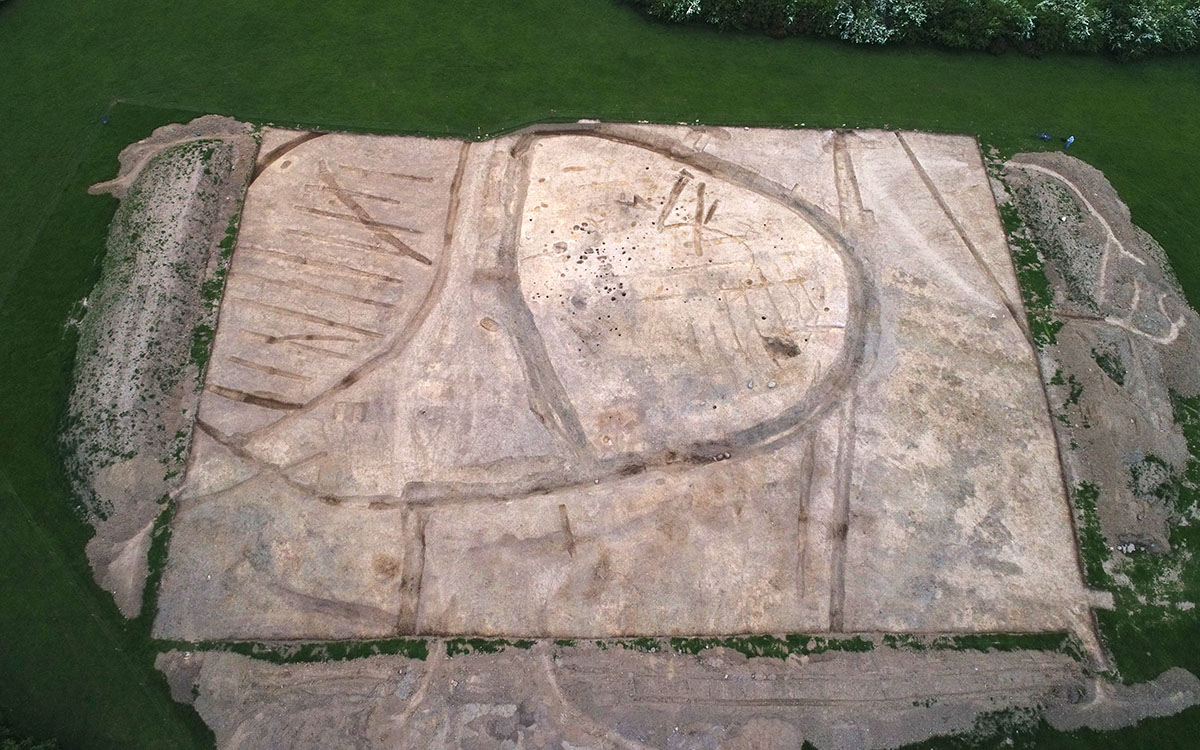In 2012, AHP tested a recorded archaeological monument (WI009-036) in Dragoonhill townland as part of an overall assessment of a proposed realignment to the N81 near Hollywood, Co. Wicklow.
This area had close associations with the early medieval monastery at Glendalough to which it was connected by St. Kevin’s Road, a pilgrimage route through the Wicklow Mountains via the King’s River and Glendassan Valleys. When we returned to excavat the site in 2017, we found an extensive early medieval ringfort and associated field system, with evidence for a late Neolithic/ early Bronze Age (Beaker Period) occupation (worked flint, a stone axe fragment & pottery). Internal features included an 11m-diameter curvilinear slot trench, remains of post-built structures, hearths and a cereal-drying kiln. Artefacts included iron knives, fragments of lignite bracelets and metalworking waste. Late medieval pottery was also found.
From a much later period, an Ordnance Survey triangulation point recorded on the 1908 25-inch edition map was marked by a perforated red clay tile. Modern agricultural drains and field boundaries were also identified and a considerable quantity of modern pottery and agricultural metal was recovered.
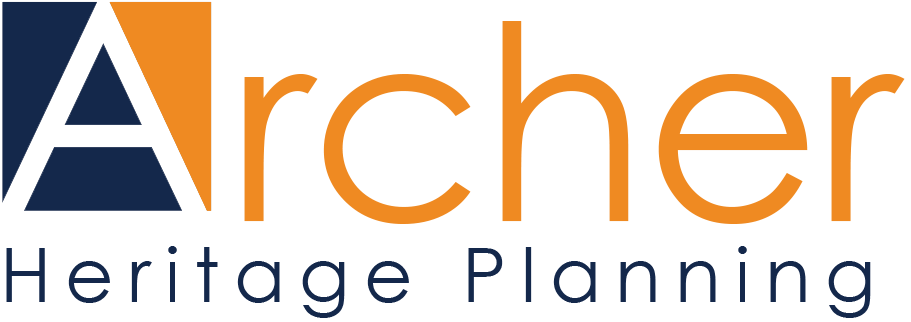
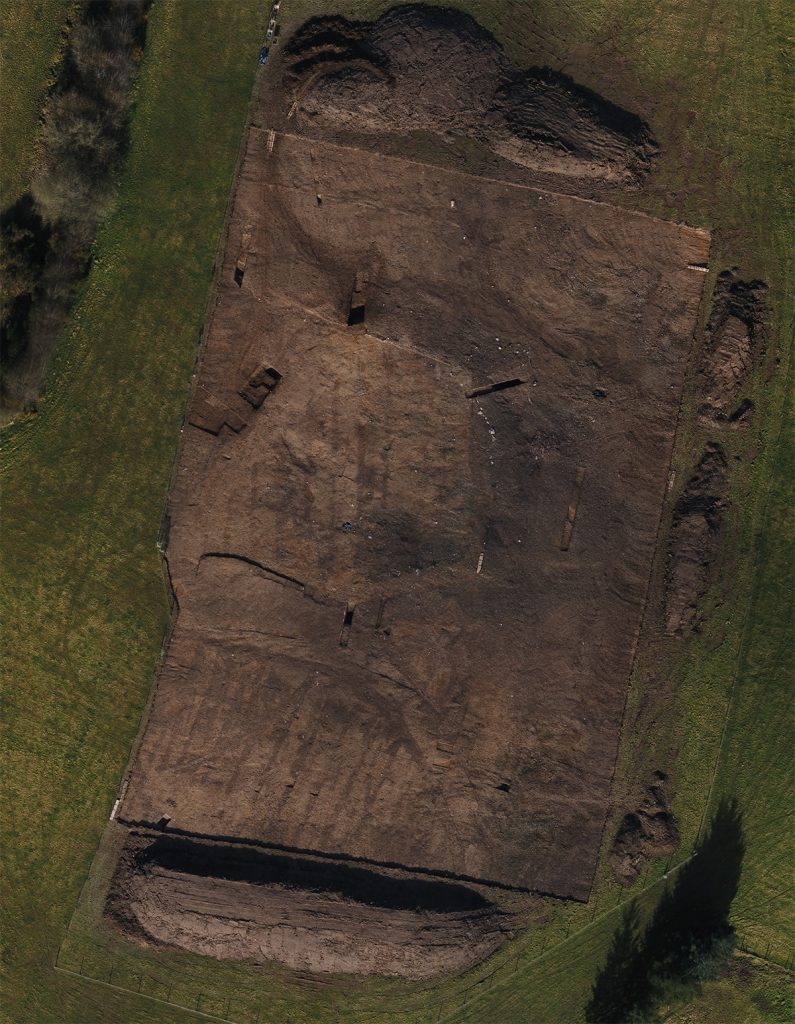
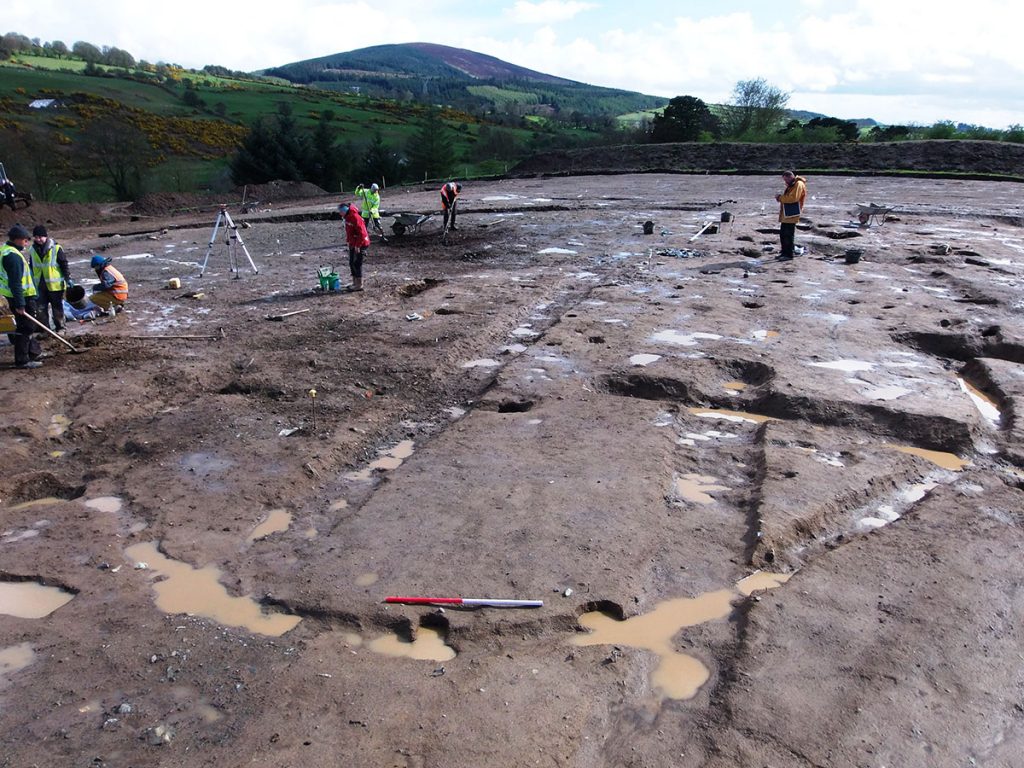 Works progressing on a structure within the enclosure.
Works progressing on a structure within the enclosure.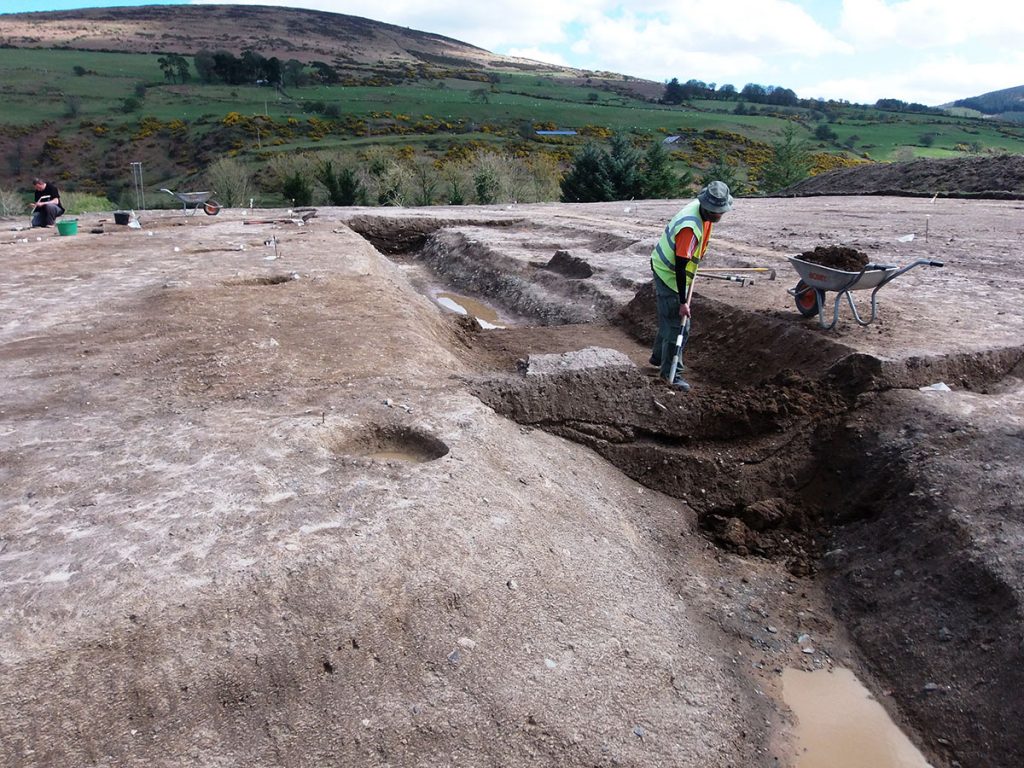 The last of the ditch being excavated.
The last of the ditch being excavated.